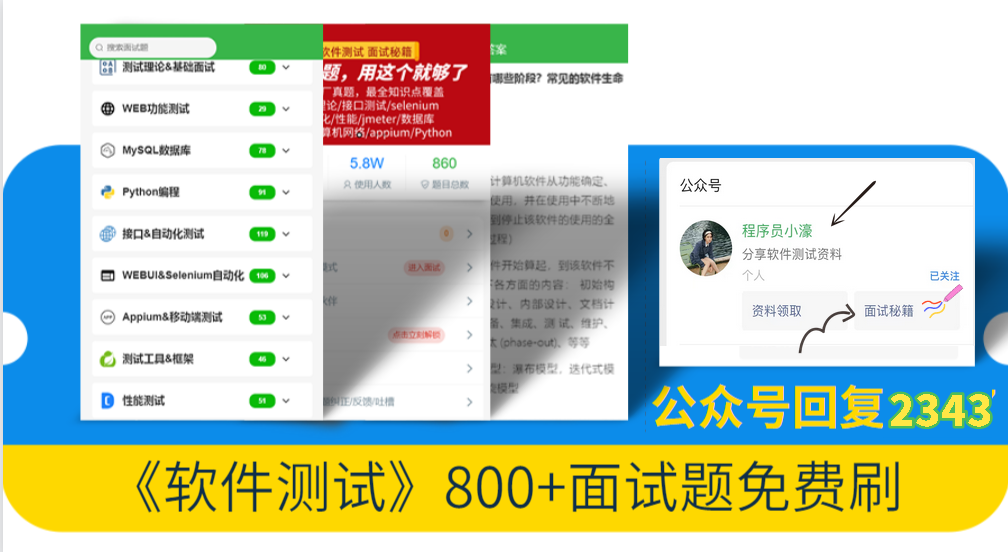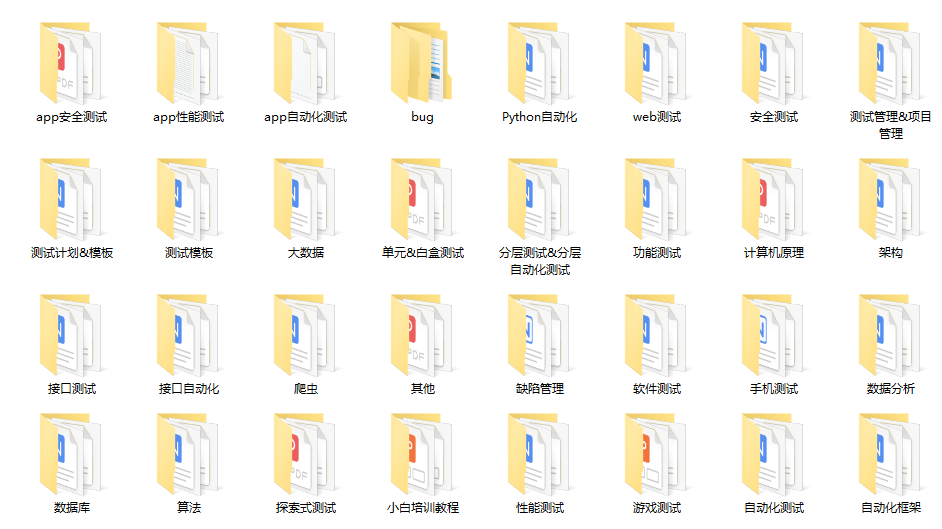使用poco2 UI自动化测试框架编写一套电商全流程自动化测试!

在移动应用程序开发中,自动化测试是一个重要的环节。为了简化移动应用的自动化测试过程,Poco2是一个备受推崇的移动应用自动化测试框架。本文将介绍Poco2的特点以及在实际接口自动化工作中的应用示例代码。
INSPIRATION
介绍
![]()
Poco2是一款Python编写的开源自动化测试框架,专为移动应用程序而设计。它提供了一系列简洁而强大的API和工具,用于定位和操作移动应用程序的UI元素,执行各种测试操作并进行结果验证。
以下是使用Poco2的简单步骤:
安装Poco2:使用pip安装Poco2:pip install poco初始化Poco2:在Python脚本中导入Poco库,并初始化Poco对象。您需要指定设备类型(如Android或iOS)以及设备连接信息。
编写测试用例:
使用Poco2提供的API和操作方法编写测试用例。您可以定位和操作移动应用程序的UI元素,执行点击、滑动、输入等操作,并进行结果验证。
INSPIRATION
示例
![]()
编写一套电商购买的全流程(含支付、退货、退款)及测试数据清理
from poco.drivers.android.uiautomation import AndroidUiautomationPocopoco = AndroidUiautomationPoco()def test_login():# 打开电商应用poco("com.example.shop:id/app_icon").click()# 定位并输入用户名和密码poco("com.example.shop:id/username_input").set_text("myusername")poco("com.example.shop:id/password_input").set_text("mypassword")# 点击登录按钮poco("com.example.shop:id/login_button").click()# 验证登录是否成功assert poco("com.example.shop:id/welcome_message").exists()def test_browsing_products():# 浏览商品列表poco("com.example.shop:id/products_tab").click()# 选择第一个商品poco("com.example.shop:id/product_1").click()# 验证进入商品详情页assert poco("com.example.shop:id/product_details").exists()def test_add_to_cart():# 点击加入购物车按钮poco("com.example.shop:id/add_to_cart_button").click()# 验证成功添加到购物车提示assert poco("com.example.shop:id/add_to_cart_success").exists()def test_checkout():# 进入购物车poco("com.example.shop:id/cart_tab").click()# 验证购物车中有商品assert poco("com.example.shop:id/cart_items").exists()# 点击结算按钮poco("com.example.shop:id/checkout_button").click()# 输入收货地址信息poco("com.example.shop:id/address_input").set_text("123 Main St")poco("com.example.shop:id/city_input").set_text("City")poco("com.example.shop:id/zipcode_input").set_text("12345")# 点击确认订单按钮poco("com.example.shop:id/confirm_order_button").click()# 验证订单提交成功提示assert poco("com.example.shop:id/order_success").exists()def test_payment():# 进入支付页面poco("com.example.shop:id/payment_tab").click()# 输入支付密码poco("com.example.shop:id/payment_password_input").set_text("mypaymentpassword")# 点击确认支付按钮poco("com.example.shop:id/confirm_payment_button").click()# 验证支付成功提示assert poco("com.example.shop:id/payment_success").exists()def test_return():# 进入退货页面poco("com.example.shop:id/returns_tab").click()# 选择要退货的商品poco("com.example.shop:id/product_to_return").click()# 输入退货原因poco("com.example.shop:id/return_reason_input").set_text("Defective item")# 点击确认退货按钮poco("com.example.shop:id/confirm_return_button").click()# 验证退货成功提示assert poco("com.example.shop:id/return_success").exists()def test_refund():# 进入退款页面poco("com.example.shop:id/refunds_tab").click()# 选择要退款的订单poco("com.example.shop:id/order_to_refund").click()# 输入退款金额poco("com.example.shop:id/refund_amount_input").set_text("10.00")# 点击确认退款按钮poco("com.example.shop:id/confirm_refund_button").click()# 验证退款成功提示assert poco("com.example.shop:id/refund_success").exists()def test_logout():# 点击退出按钮poco("com.example.shop:id/logout_button").click()# 验证退出是否成功assert poco("com.example.shop:id/login_button").exists()if __name__ == '__main__':test_login()test_browsing_products()test_add_to_cart()test_checkout()test_payment()test_return()test_refund()test_logout()
INSPIRATION
总结
![]()
上述代码演示了一个包含支付、退货和退款流程的电商购买自动化测试脚本。在每个测试函数中,我们使用Poco2的API来定位和操作UI元素,并进行结果验证。通过运行这些测试函数,可以模拟用户的购买、支付、退货和退款行为,并验证各个流程的正确性。
请注意,上述代码是基于Android平台的示例,如果您使用其他平台,请根据相关文档调整相应的驱动和API。
下面是配套资料,对于做【软件测试】的朋友来说应该是最全面最完整的备战仓库,这个仓库也陪伴我走过了最艰难的路程,希望也能帮助到你!

最后: 可以在公众号:程序员小濠 ! 免费领取一份216页软件测试工程师面试宝典文档资料。以及相对应的视频学习教程免费分享!,其中包括了有基础知识、Linux必备、Shell、互联网程序原理、Mysql数据库、抓包工具专题、接口测试工具、测试进阶-Python编程、Web自动化测试、APP自动化测试、接口自动化测试、测试高级持续集成、测试架构开发测试框架、性能测试、安全测试等。
如果我的博客对你有帮助、如果你喜欢我的博客内容,请 “点赞” “评论” “收藏” 一键三连哦!
本文来自互联网用户投稿,该文观点仅代表作者本人,不代表本站立场。本站仅提供信息存储空间服务,不拥有所有权,不承担相关法律责任。 如若内容造成侵权/违法违规/事实不符,请联系我的编程经验分享网邮箱:chenni525@qq.com进行投诉反馈,一经查实,立即删除!
- Python教程
- 深入理解 MySQL 中的 HAVING 关键字和聚合函数
- Qt之QChar编码(1)
- MyBatis入门基础篇
- 用Python脚本实现FFmpeg批量转换
- 如何解决错误代码0xc0000428,这里提供几种方法
- web前端项目-七彩夜空烟花【附源码】
- 计算机msvcp140.dll丢失怎样修复,分享5个修复方法
- jmeter,跨线程调用cookie
- Python脚本——.csv文件转.txt脚本三则
- 总计近700页的超全面的前端面试、笔试大全
- HTTP 错误 401.3 - Unauthorized 由于Web服务器上此资源的访问控制列表(ACL)配置或加密设置。
- 【Python学习】Python学习16- 文件I/O
- 【面试突击】分布式锁、幂等性问题实战
- 2023 英特尔On技术创新大会直播 | AI 融合发展之旅